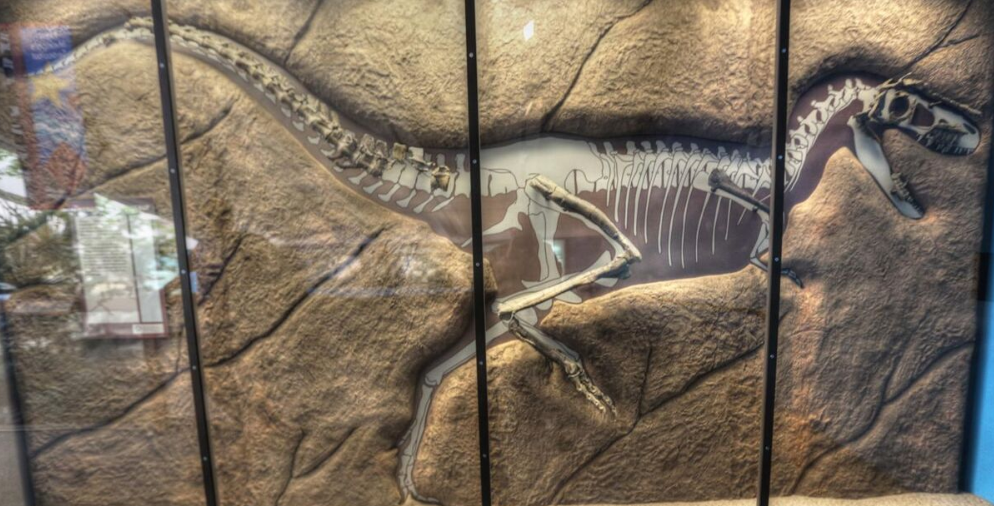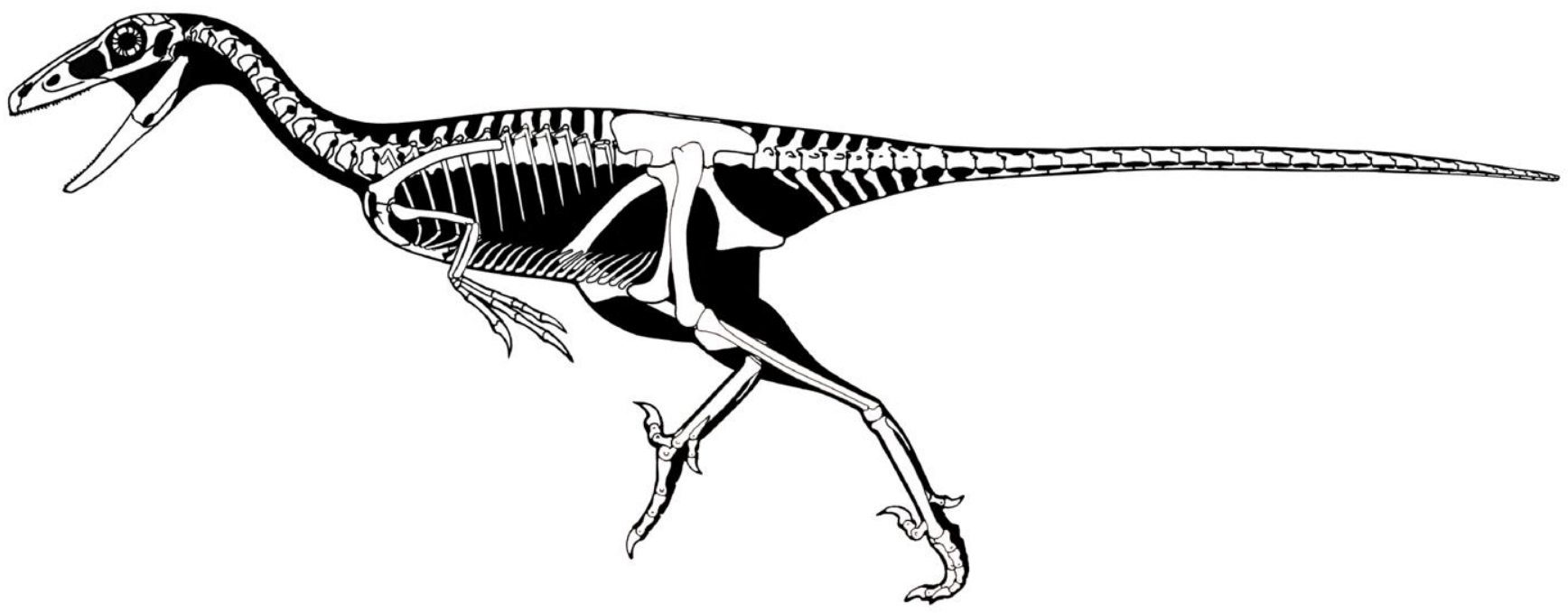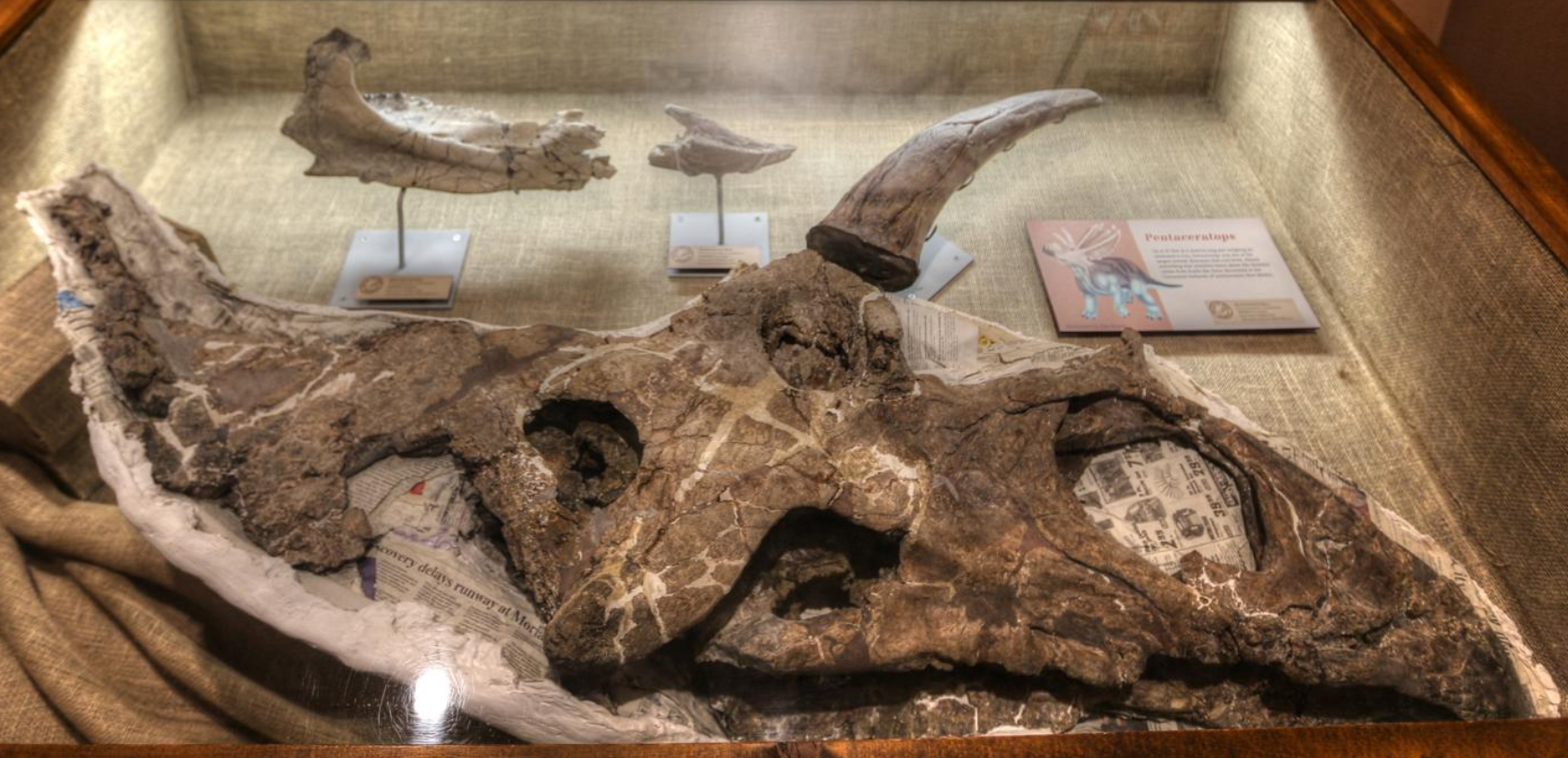The Kirtlandian is a North American land-vertebrate faunal age of the Cretaceous period, following the Judithian and succeeded by the Edmontonian. It lasted about 2 million years, ca 74.8 to 72.8 Mya and is characterized by the ceratopsian Pentaceratops sternbergii, which lived throughout the Kirtlandian. It was first named by R.M. Sullivan and S.G. Lucas in 2003 as a faunal age for the Kirtland and Fruitland formations. Previously, only five land-vertebrate ages were identified from the Late Cretaceous. as identified by Loris S. Russell in 1975, they include the Paluxian, Aquilan, Judithian, Edmontonian, and the Lancian. Before the naming of the Kirtlandian, three gaps, between the Paluxian and Aquilan, the Aquilan and the Judithian, and the Judithian and Edmontonian, were identified but not named. The Fruitland Formation measures 97 to 107 metres (318 to 351 ft) thick, and with the 594 metres (1,949 ft) of the Kirtland Formation, the Kirtlandian consists of 701 metres (2,300 ft) of sediments. The rock types within the formations are primarily coal beds, but also include sandstone, siltstone, mudstone, and shale. Within the sediments with a Kirtlandian age, two local faunas, the Hunter Wash local fauna, and the Willow Wash local fauna, have been identified. The currently accepted date of the Kirtlandian is 74.8 to 72.8 million years ago.
- siltstone
- paluxian
- kirtlandian
1. Paleoecology
The Kirtlandian is an age of fauna that lasted for 2 million years.[1] It is Campanian in age, and is placed between the Judithian age, which is characterized by older taxa, and the Edmontonian faunal age, characterized by the appearance of Edmontosaurus regalis[2] and Pachyrhinosaurus canadensis.[3] The geological formations found to date or persist from the Kirtlandian are the Bearpaw, the upper Kaiparowits Formation, the Kirtland, Fruitland, Williams Fork, Fort Crittenden, Ringbone, Corral de Enmedio, Packard, and El Gallo formations, and possibly the lower part of the Cerro del Pueblo Formation and upper region of the Aguja Formation. These formations are exposed in Alberta and Montana, Utah, New Mexico, New Mexico, Colorado, Arizona, New Mexico, Sonora, Baja California, Baja California, and possibly Coahuila, and Texas , respectively.[2]
1.1. Stratigraphy
The stratigraphy of the Kirtlandian was studied by Robert M. Sullivan and Spencer G. Lucas in 2003,[3] Sullivan in 2006a,[1] Lucas and Sullivan in 2006b,[2] and Nicholas R. Longrich in 2010.[4]
Local faunas
Two local faunas are known from the Kirtlandian faunal age. They include the Hunter Wash local fauna and the Willow Wash local fauna. The Hunter Wash local fauna was defined as the vertebrates "obtained from the upper 40 feet of the Fruitland Formation and the lower 55 feet of the lower shale of the Kirtland Shale (now a formation) in Hunter Wash (member)." The Hunter Wash fauna therefore includes all taxa from the Bisti region of the Bisti/De-Na-Zin Wilderness, and the animals from the Fossil Forest and Ah-shi-sle-pah Wash. The Willow Wash fauna was named for all the fauna of the De-na-zin Member of the Kirtland Formation. The majority of the fauna from the Willow Wash were originally thought to belong to the Alamo Wash local fauna of the Ojo Alamo Formation, until it was found that the entire fauna was in fact from the older Kirtland Formation.[2]
Thickness
The Kirtland and Fruitland formations both consist of the major formations in the Kirtlandian age.[3] The Fruitland Formation was measured in 2003 to be between 97 and 107 metres (318 and 351 ft) thick, and the Kirtland was measured at 594 metres (1,949 ft) thick. Together they measured 691 to 701 metres (2,267 to 2,300 ft).[3] Later in 2010, a different study found more precise measurements. It found the Fruitland Formation to be 100 metres (330 ft) thick, and the Kirtland Formation to be around 600 metres (2,000 ft) thick. These thicknesses combine to give the formation a height of 700 m (2,300 ft).[4]
Lithology
The lithology of the Kirtlandian formations are made up of mostly a combination of coal beds. The Fruitland Formation consists entirely of them, and one fifth of all rocks of the Kirtland Formation are a coal. The other common rocks found in the Kirtland Formation are siltstone, mudstone, shale and most commonly, sandstone. The Bisti Bed of the Hunter Wash Member is made up completely of sandstone, which marks the border between the Kirtland and Fruitland formations.[2]
Age
The Kirtlandian faunal age was named by Lucas and Sullivan in 2003, and found by their original study to date from 74.9 to 72 million years ago.[3] In 2006, Sullivan and Lucas refined their estimate, stating that the Kirtlandian ranged from 75 to 72.8 million years ago.[2] Later that year, Sullivan changed the time range again, finding that the faunal age lasted only 2 million years, from 74.8 to 72.8 million years ago. He said that the later part of the Kirtlandian, from the De-na-zin Member of the Kirtland Formation, dated to 73 million years ago, on the basis of ash layers dating to 73.04 and 73.37 million years ago.[1] This observation was based on findings by Sullivan and Lucas, who dated the two ash layers from 73.04 ± 0.25 and 73.37 ± 0.28 million years ago. They also dated the earlier ashes from the Fruitland Formation, which dated to 75.56 ± 0.41, 74.55 ± 0.29, and 74.11 ± 0.62 million years ago. The first ash, called by them the Dog Eye Pond, was found slightly higher than the start of the Fruitland Formation, which meant that the start of the Fruitland Formation was older than 75.5 million years ago.[2] More precise dating in 2010 by Longrich found that the second youngest ash can actually be dated more precisely than thought by Sullivan (2006), only having an error range of 0.18 million years. Longrich also dated the two older ashes, finding a date the same as that of Sullivan in 2006.[4] These ash datings are what Sullivan used to find the precise age of the Kirtlandian age.[1]
1.2. Fauna
The Kirtlandian has a distinct fauna, including four species distinguishing it from other ages. The species include the dinosaurians Pentaceratops sternbergii, Parasaurolophus cyrtocristatus, and Kritosaurus navajovius,[2] with the only non-dinosaurian being Melvius chauliodous, a fish taxon.[5]
Fruitland and Kirtland Formations

The dinosaurian fauna from the Kirtlandian from the Fruitland and Kirtland formations includes the theropods Bistahieversor sealeyi[6] (previously Daspletosaurus and Albertosaurus sp.[2]), Ornithomimus antiquus, and "Saurornitholestes" robustus (previously Saurornitholestes langstoni[1]); the titanosaur Alamosaurus sanjuanensis; the hadrosaurids Anasazisaurus horneri, Kritosaurus navajovius, Naashoibitosaurus ostromi, Parasaurolophus cyrtocristatus, and Parasaurolophus tubicen; the ankylosaurians Nodocephalosaurus kirtlandensis, Glyptodontopelta mimus,[7] and Ahshislepelta minor;[7] and the marginocephalians Sphaerotholus goodwini (called Prenocephale goodwini[2]), Stegoceras novomexicanum (previously Stegoceras validum[2]), Pentaceratops sternbergii, Titanoceratops ouranos,[4] and a new genus and species of centrosaurine.[2]
Fossil turtles were very abundant in the Kirtlandian, and in the Campanian in general. Over 200 specimens and 15 species of turtle have been found from the Fruitland/Kirtland Formations. Among the turtles are the bothremydid Chedighaii hutchisoni; the pleurosternid Compsemys sp.; the baenodds Denazinemys nodosa and Scabremys ornata (previously Denazinemys ornata); the non-baenodd baenids Neurankylus baueri, Thescelus hemispherica, and Thescelus rapiens; the adocids Adocus bossi and Adocus kirtlandicus; the nanhsiungchelyids Basilemys gaffneyi and possibly Basilemys nobilis; the trionychids Aspideretoides austerus, Aspideretoides robustus; and two indeterminate turtles, one a plastominine, and one assigned to Kinosternoidea.[8]
Williams Fork Formation

Kirtlandian fauna are also present in the Williams Fork Formation. The principal index taxon of the Kirtlandian, Pentaceratops sternbergii, in known from the formation, along with the theropods Troodon formosus, Dromaeosaurus albertensis, Saurornitholestes langstoni, Richardoestesia gilmorei, and indeterminate tyrannosaurids; the ankylosaurians Ankylosaurus magniventris and Nodosauridae indet.; the ornithopods Thescelosaurus neglectus and an unnamed hadrosaurid. Mammals from the formation include Mesodma thompsoni, Cimolodon nitidus, ?Cimolodon sp., Cimolomys sp., cf. Meniscoessus intermedius, Meniscoessus major, Meniscoessus collomensis, ?Paracimexomys sp., Turgidodon rhaister, Turgidodon russelli, Alphadon marshi, Alphadon wilsoni, Pediomys cooki, Aquiladelphis incus, Eodelphis sp., and Aenigmadelphys sp. nov., although many identifications of mammals, as well as dinosaurs are uncertain.[2]
Fort Crittenden Formation
The Fort Crittenden Formation is one of many formations dating from inside the Kirtlandian. The formation is characterized by Melvius, a possible index taxon for the Kirtlandian. Species other than Melvius sp. include the fishes Myledaphus bipartitus, cf. Pachyrizodus sp., lepisosteids, and pycnodontids; the turtles Brasilemys, "Aspideretes" sp., and "Plastomenus", the dinosaurs cf. Saurornitholestes and cf. Richardoestesia; the amphibians cf. Opisthotriton and cf. Scapherpeton sp.; the crocodylian Allognathosuchus sp.; teiid and anguid lizards; and possibly a pterosaur.[2]
Ringbone Formation
Few fossils have been found in the Ringbone Formation, the only significant one being a specimen that is either Albertosaurus sp. or Daspletosaurus sp., known from a tooth and vertebrae. The only reason the Ringbone Formation is assigned to the Kirtlandian age is because the rocks are the same age as the Fort Crittenden Formation, which contains one of the index taxa of the Kirtlandian.[2]
Upper Aguja Formation
The upper region of the Aguja Formation is from the Kirtlandian. Fauna from the section of this formation include the protostegid turtles Terlinguachelys fischbecki and "Aspideretes";[9] the crocodylian Deinosuchus riograndensis (previously Phobosuchus); the dinosaurs Agujaceratops mariscalensis, Kritosaurus navajovius, Kritosaurus sp., Panoplosaurus sp., ?Stegoceras sp., Saurornitholestes langstoni, Richardoestesia isosceles, Richardoestesia cf. gilmorei, an intermediate tyrannosaurid, and an unnamed ornithomimid.[2]
1.3. Paleobiogeography

The two main formations of the Kirtlandian, the Fruitland and Kirtland, were originally included in the older Judithian age, an interpretation superseded with the naming of the Kirtlandian. In 1975, Russell identified five Late Cretaceous land-vertebrate ages, the Paluxian, Aquilan, Judithian, Edmontonian, and Lancian, based on mammal assemblages. Three previously unnamed faunal ages were given names and term "Kirtlandian" was chosen for the gap between the Judithian and Edmontonian. Pentaceratops is distributed throughout all of the San Juan Basin. Outside of the basin, Pentaceratops is well-known, and known with certainty, from the Williams Fork Formation. This means that the formation, along with the Cretaceous formations of the basin, are inside the Kirtlandian.[2]
Associations
The Kirtlandian is characterized by a single vertebrate association. The association was identified by Lehman in 2001 and termed the "Kritosaurus - Parasaurolophus association". This association was found to only be present in the later half of the Kirtlandian faunal age, around 73.4–73 million years ago. Another association, this one the "Corythosaurus - Centrosaurus association" is found at the very end of the Judithian, right before the Kirtlandian, between 76.5 and 74.2 million years ago. Another association, the "Pachyrhinosaurus - Edmontosaurus association", was found to date to 70.6 mya, and it used to symbolize the end of the Kirtlandian.[2]
The content is sourced from: https://handwiki.org/wiki/Earth:Kirtlandian
References
- Sullivan, R.M. (2006). "Saurornitholestes robustus, n. sp. (Theropoda: Dromaeosauridae) From the Upper Cretaceous Kirtland Formation (De-Na-Zin Member), San Juan Basin, New Mexico". in Lucas, S.G. & Sullivan, R.M.. Late Cretaceous vertebrates from the Western Interior. New Mexico Museum of Natural History and Science Bulletin. 35. pp. 253–256. http://econtent.unm.edu/cdm/compoundobject/collection/bulletins/id/710.
- Lucas, S.G. & Sullivan, R.M. (2006). "The Kirtlandian Land-Vertebrate "Age"-Faunal Composition, Temporal Position, and Biostratigraphic Correlation in the Nonmarine Upper Cretaceous of Western North America". in Lucas, S.G. & Sullivan, R.M.. Late Cretaceous vertebrates from the Western Interior. New Mexico Museum of Natural History and Science Bulletin. 35. pp. 7–23. http://econtent.unm.edu/cdm/compoundobject/collection/bulletins/id/710.
- Sullivan, R.M. & Lucas, S.G. (2003). "The Kirtlandian, A New Land-Vertebrate "Age" for the Late Cretaceous of Western North America". New Mexico Geological Society Guidebook, 54th Field Conference, Geology of the Zuni Plateau: 369–377. https://nmgs.nmt.edu/publications/guidebooks/downloads/54/54_p0369_p0377.pdf.
- Longrich, N.R. (2010). "Titanoceratops ouranous, a giant horned dinosaur from the Late Campanian of New Mexico". Cretaceous Research: 36. doi:10.1016/j.cretres.2010.12.007. https://dinosaures-web.com/sites/default/files/publications/Longrich_2010_Titanoceratops%20ouranous.pdf.
- Sullivan, R.M.; Jasinski, S.E.; Lucas, S.G. (2011). "Preliminary Observations on a Skull of the Amiid Fish Melvius, from the Upper Cretaceous Kirtland Formation, San Juan Basin, New Mexico". in Sullivan, R.M. et al.. Fossil Record 3. New Mexico Museum of Natural History and Science Bulletin. 53. pp. 475–483. http://www.robertmsullivanphd.com/uploads/172._Sullivan_et_al__Melvius__COLOR.pdf.
- Carr, T.D.; Williamson, T.E. (2010). "Bistahieversor sealeyi, gen. et sp. nov., a new tyrannosauroid from New Mexico and the origin of deep snouts in Tyrannosauroidea". Journal of Vertebrate Paleontology 30 (1): 1–16. doi:10.1080/02724630903413032. http://www.tandfonline.com/doi/pdf/10.1080/02724630903413032.
- Burns, M.E. & Sullivan, R.M. (2011). "A New Ankylosaurid from the Upper Cretaceous Kirtland Formation, San Juan Basin, with Comments on the Diversity of Ankylosaurids in New Mexico". in Sullivan, R.M. et al.. Late Cretaceous vertebrates from the Western Interior. New Mexico Museum of Natural History and Science, Bulletin. 53. pp. 169–177. http://www.robertmsullivanphd.com/uploads/162._Burns_and_Sullivan__Ahshislepelta__COLOR.pdf.
- Sullivan, R.M.; Jasinski, S.E. & Lucas, S.G. (2013). "Re-Assessment of Late Campanian (Kirtlandian) Turtles from the Upper Cretaceous Fruitland and Kirtland Formations, San Juan Basin, New Mexico, USA". in Brinkman, D.B. et al.. Morphology and Evolution of Turtles. Vertebrate Paleobiology and Paleoanthropology. 337. doi:10.1007/978-94-007-4309-0_20. http://www.stevenjasinski.com/uploads/27_-_Sullivan_et_al__2012__Re-Assessment_of_Late_Campanian__Kirtlandian__Turtles_from_Upper_Cretaceous_Fruitland.pdf.
- Sankey, J.T. (2008). "Vertebrate Paleoecology from microsites, Talley Mountain, upper Aguja Formation (Late Cretaceous), Big Bend National Park, Texas". in Sankey, J.T.; Baszio, S.. Vertebrate Microfossil Assemblages Their Role in Paleoecology and Paleobiogeography. Indiana University Press. ISBN 978-0-253-34927-9. http://geology.csustan.edu/julia/pdf/sankey-big-bend.pdf.
